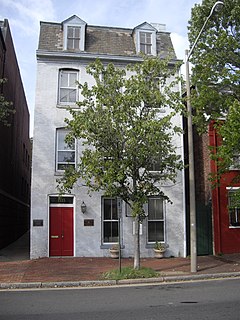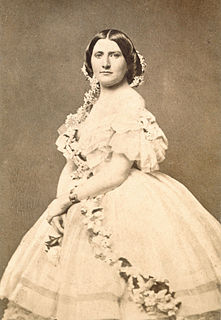 W
WThe Twenty-third Amendment to the United States Constitution extends the right to vote in presidential elections to citizens residing in the District of Columbia. The amendment grants the district electors in the Electoral College as though it were a state, though the district can never have more electors than the least-populous state. The Twenty-third Amendment was proposed by the 86th Congress on June 16, 1960, and was ratified by the requisite number of states on March 29, 1961.
 W
WThe Alexandria Canal was a canal in the United States that connected the city of Alexandria to Georgetown in the District of Columbia.
 W
WAlexandria is an independent city in the Commonwealth of Virginia in the United States. As of the 2010 census, the population was 139,966, and in 2020, the population was estimated to be at 159,200. Located along the western bank of the Potomac River, Alexandria is approximately 7 miles (11 km) south of downtown Washington, D.C.
 W
WArlington County is a county in the Commonwealth of Virginia, often referred to simply as Arlington or Arlington, Virginia. The county is situated in Northern Virginia on the southwestern bank of the Potomac River directly across from the District of Columbia, of which it was once a part. The county is coterminous with the U.S. Census Bureau's census-designated place of Arlington. Arlington is considered to be the second-largest "principal city" of the Washington metropolitan area.
 W
WThe District of Columbia was created in 1801 as the federal district of the United States, with territory previously held by the states of Maryland and Virginia ceded to the federal government of the United States for the purpose of creating its federal district, which would encompass the new national capital of the United States, the City of Washington. The District came into existence, with its own judges and marshals, through the District of Columbia Organic Act of 1801; previously it was the Territory of Columbia. According to specific language in the U.S. Constitution, it was one hundred square miles (259 km2).
 W
WThe Franklin and Armfield Office, which houses the Freedom House Museum, is a historic commercial building in Alexandria, Virginia. Built c. 1810-20, it was first used as a private residence before being converted to the offices of the largest slave trading firm in the United States, started in 1828 by Isaac Franklin and John Armfield. "As many as [a] million people are thought to have passed through between 1828 and 1861, on their way to bondage in Mississippi and Louisiana". Another source, using ship manifests in the National Archives, gives the number as "at least 5,000".
 W
WHarriet Rebecca Lane Johnston acted as First Lady of the United States during the presidency of her uncle, lifelong bachelor James Buchanan, from 1857 to 1861. Lane is among eleven women who have served as First Lady, but were not married to the President, with most of the other women being relatives of widowed presidents.
 W
WThe Lorton Reformatory, also known as the Lorton Correctional Complex, is a former prison complex in Lorton, Virginia, established in 1910 for the District of Columbia, United States.
 W
WThe retrocession of the District of Columbia refers to both past and proposed acts of returning some or all of the land that had been ceded to the federal government of the United States for the purpose of creating its federal district for the new national capital of the United States, the City of Washington. The land was originally ceded to the federal government by Virginia and Maryland in 1790. After moving through various stages of federal and state approval, the Virginia portion was eventually returned in March 1847. The Maryland portion still constitutes the District of Columbia today, but some have proposed "retro-ceding" it, in part or in whole, to address issues related to the voting rights of residents of the District of Columbia.
 W
WThe Sheppard Bone-Dry Act, sponsored by Sen. Morris Sheppard (D) of Texas, was passed by the US Congress in 1917. It imposed a ban on alcoholic beverages in the District of Columbia.
 W
WThe District of Columbia Voting Rights Amendment was a proposed amendment to the United States Constitution that would have given the District of Columbia full representation in the United States Congress, full representation in the Electoral College system, and full participation in the process by which the Constitution is amended. It would have also repealed the Twenty-third Amendment, which granted the District of Columbia the same number of electoral votes as that of the least populous state, but gave it no role in contingent elections.
 W
WThe County of Washington was one of five original political entities within the District of Columbia, the capital of the United States. Formed by the Organic Act of 1801 from parts of Montgomery and Prince George's County, Maryland, Washington County referred to all of the District of Columbia "on the east side of the Potomac, together with the islands therein." The bed of the Potomac River was considered to be part of Washington County as well.